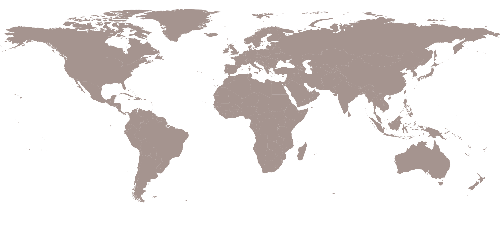Green-Blue Network in China
Nature-based Urban Drainage Infrastructure
Green-Blue Network in China
Nature-based urban drainage infrastructure
-
1 / 12
Green-Blue Network in China
The innovative design integrates flood control, wastewater treatment, nature restoration and public space together, transforms a lifeless concrete drainage into green that provides 0.7 million people a cool and pleasant escape, increases flood resiliency by 36%, saves 70% of wastewater treatment energy consumption. The nature-based solution tested in this pilot project is replicable throughout the city and the world.
-
2 / 12
Holcim Awards Acknowledgement prize Asia Pacific
Winner presentation to Green-Blue Network in China - Nature-based urban drainage infrastructure without winning authors present (l-r): Maria Atkinson, Chairperson of the Holcim Foundation (at podium); Magali Anderson, Member of the Board of the Holcim Foundation, Chief Sustainability and Innovation Officer of the Holcim Group; and Philippe Block, Member of the Holcim Awards jury Asia Pacific 2020.
-
3 / 12
Green-Blue Network in China
The step-by-step process of transforming concrete drainage into green infrastructure using a nature based symbiotic design, to give water more space to increate flood resiliency, to remove the rich nutrients in the primary treated waste water through the biological process saving a lot energy, to follow the tide cycle to make waterfront more accessible, and create a urban nature that allow residents to have an immersive rich and pleasant spatial experience in the lush and cool glen.
-
 Awards Acknowledgement prize 2020–2021 Asia Pacific
Awards Acknowledgement prize 2020–2021 Asia Pacific
A project for the transformation of an existing infrastructure into a sustainable green-blue network for the city of Shenzhen.
By Kongjian Yu - Peking University & Turenscape, Beijing, China and
Through a phased and strategic approach, the Liyumen Waterway Park reclaims an underperforming drainage system in Shenzhen’s Qianhai district and transforms it into a vibrant green-blue network. This innovative infrastructure not only delivers essential flood control and wastewater treatment services, but also creates a valuable public green space within a dense, fast-growing urban district expected to house more than 700,000 people.
The existing concrete canal is partially reconfigured to make way for terraced wetlands and lush vegetation. Demolished concrete is recycled and reused as gabion structures for planters, retaining walls, and boardwalks. Mangroves and native wetland plants activate natural biological processes to cleanse wastewater, which is then reused to irrigate and fertilize the park.
The result is a resilient urban oasis offering multiple environmental benefits: a 36% increase in flood resilience, 70% energy savings in wastewater treatment, improved microclimate conditions, and an overall enhancement of urban livability. As a pilot project, Liyumen Waterway Park demonstrates a replicable nature-based solution to address water pollution and environmental degradation on a territorial scale.
Jury Appraisal
The Holcim Foundation Awards jury Asia Pacific highly appreciated the symbiotic approach that deploys vegetation at the center of this proposal, moving beyond the biophilic landscape design perspective. The project is very refined and provides thoroughly researched and precise information on the life cycle assessment, which reveals a straightforward and robust methodological approach. The issue of drainage systems improvement and inclusion into a wider territorial vision was found particularly convincing and relevant for this geographic region. The jury also praised its high potential for replicability at a global scale.
Project Updates
Statements on Sustainability
-
Across the globe, single-objective flood control infrastructure has turned rivers into concrete channels, stripping them of ecological resilience and aesthetic value. At the same time, 85% of wastewater is discharged untreated, polluting rivers and oceans. While primary treatment is relatively affordable—removing odour, heavy metals, and pathogens—deep treatment to eliminate nutrients such as nitrogen (TN) and phosphorus (TP) is both energy-intensive and costly, especially for developing countries. Ironically, these nutrients are valuable as fertilisers but are treated as pollutants in urban systems. Liyumen Park presents a nature-based, symbiotic solution that rethinks this paradigm—by turning a problem into a resource and combining ecological regeneration with infrastructure transformation.
-
Drawing from previous pilot studies, 10km² of constructed wetland can purify 0.8km³ of primary treated wastewater from Grade V (polluted) to Grade III (eco-friendly), without relying on energy-intensive tertiary treatment. This transition would otherwise require 250% more energy and double the cost. The Liyumen Waterway integrates 56km² of living walls and wetland zones—capable of treating 5.1km³ of effluent per day. When fully implemented across the 280km² Blue Circle masterplan, up to 25.5km³ of Grade V water could be restored annually—equivalent to 12% of the city’s total treated wastewater—saving 70% in energy consumption, or roughly 2% of the total energy use of Shenzhen’s urban district.
-
As Shenzhen’s new central business district, Qianhai spans 15km² and is planned to host more than 700,000 daily users. With urban density reaching its limit, the demand for accessible green space is critical. By converting grey infrastructure into a green-blue network, Liyumen Park offers a network of lush, shaded spaces adjacent to office towers. These ecological corridors not only improve thermal comfort but also enrich the daily lives of workers and residents—encouraging outdoor dining, walking, and recreation. The design reintroduces nature into a dense, tropical city of concrete and steel, mitigating microclimate extremes and transforming lifeless infrastructure into vibrant public space.
-
The combined strategies of vegetation, water treatment, and material reuse result in significant carbon savings:
- Cooling effect: The lush wetland and glen areas reduce energy demand for air-conditioning by an estimated 3,840 kWh per day—equivalent to 145 household units—saving 724 tonnes of CO₂ annually.
- Natural wastewater treatment: Replacing deep treatment plants with constructed wetlands saves approximately 5,000 kWh of electricity per day, reducing emissions by an additional 1,500 tonnes per year.
- Vegetation regeneration: Rehabilitated plant life absorbs an estimated 267 tonnes of CO₂ annually.
- Material reuse: Repurposing concrete for ecological planters prevents the extraction of 735 tonnes of stone and avoids 78 tonnes of CO₂ emissions.
Liyumen Park demonstrates a powerful and scalable alternative to conventional infrastructure—offering a replicable model that addresses flood control, wastewater management, public space, and carbon mitigation in a single integrated system.










